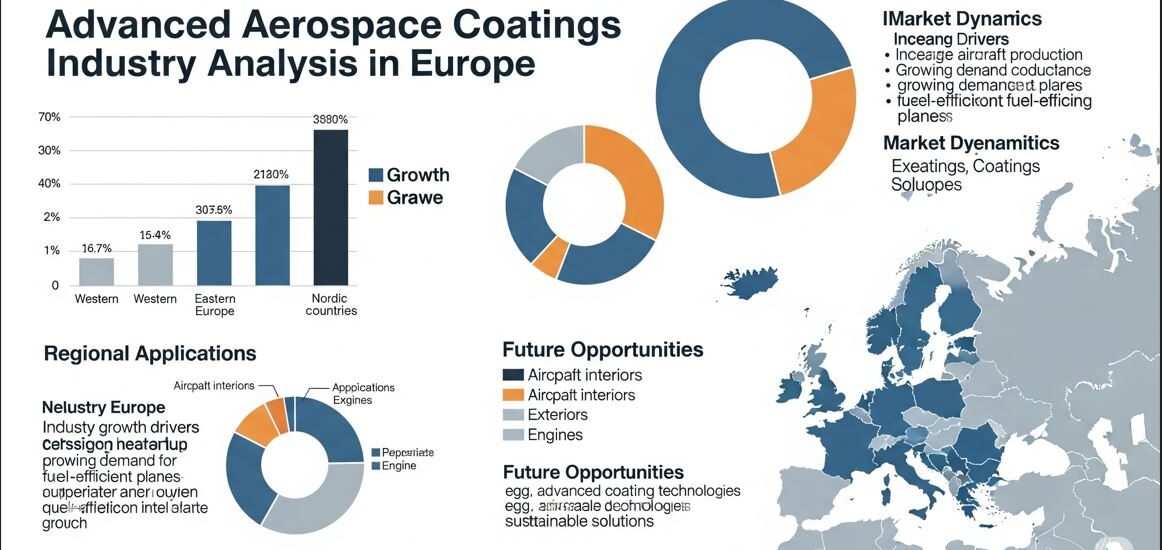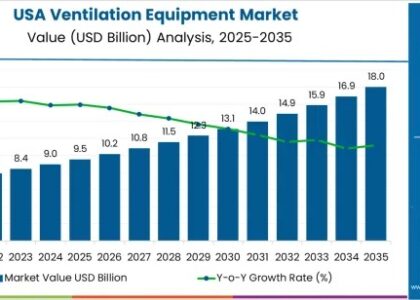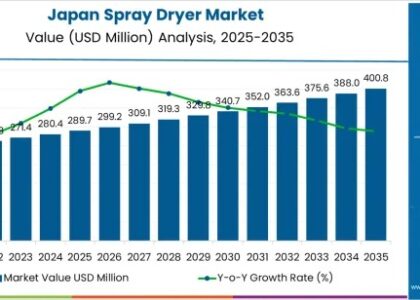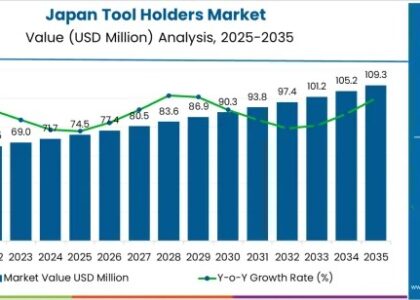The aerospace sector in Europe is evolving fast, and not just in terms of engines or airframes. One of the quietest yet most critical revolutions underway is in aerospace coatings—an often overlooked frontier that’s increasingly becoming the battleground for performance, sustainability, and compliance.
According to a new report by Future Market Insights, the Advanced Aerospace Coatings Market in Europe is poised for measurable growth over the next decade. That’s not surprising. But what’s surprising is how little attention is being paid to this vital link in the aerospace value chain.
If engines are the heart of the aircraft, coatings are its skin—and right now, that skin is being re-engineered to handle the future of flight.
Not Just Paint—A Critical Layer of Innovation
Let’s get one thing straight. These aren’t just paints. Advanced aerospace coatings serve multiple technical functions: they reduce drag, prevent corrosion, resist extreme temperatures, and improve aerodynamics. In military aircraft, they’re even tasked with stealth optimization.
FMI’s latest research suggests that Europe’s growing focus on sustainable aviation and regulatory stringency is placing coatings under the microscope. European OEMs and MROs (Maintenance, Repair, and Overhaul providers) are now demanding coatings that can withstand higher altitudes, more frequent flights, and radically different propulsion systems.
This is no small feat.
With hybrid-electric aircraft and hydrogen propulsion moving from concept to prototype, aerospace coatings must now adapt to new thermal profiles, electrical conductivity requirements, and material compatibility challenges. It’s a technological challenge as much as it is a regulatory one.
And Europe is right in the middle of it.
Request Report Sample: https://www.futuremarketinsights.com/reports/sample/rep-eu-82
The Green Pressure Cooker
Let’s talk about what’s really driving this shift: Europe’s climate policy.
With the EU’s Green Deal and Fit for 55 initiatives, aerospace players are under pressure to decarbonize fast. This isn’t just about fuel or engines—it’s about every component, down to the coating. Traditional solvent-based coatings release VOCs (volatile organic compounds), which are increasingly being banned or phased out.
FMI highlights that water-based and powder coatings are gaining traction across European aerospace facilities. But transitioning to low-VOC or zero-VOC formulations isn’t plug-and-play. It requires investment in new application methods, curing technologies, and employee training. Smaller suppliers often struggle to keep up.
And yet, standing still isn’t an option. Airlines, regulators, and even passengers are demanding cleaner, greener aviation. Europe is leading the charge. If you’re a coatings manufacturer who can’t show emissions reductions on your datasheet, you’re off the spec list.
Military and Civil: A Dual-Track Market
Europe’s aerospace sector is unique in that it spans both highly competitive commercial programs and deeply integrated defense projects. This dual nature affects how coatings are designed and approved.
Commercial aircraft coatings must meet stringent OEM performance standards while staying cost-effective. Defense applications, on the other hand, prioritize mission-specific durability—think radar-absorbing coatings or high-heat resistance for afterburners.
According to FMI, defense contracts are increasingly influencing R&D pipelines, with military specs pushing innovations that later trickle down into commercial aviation. It’s the same playbook we saw with carbon composites—and we’re seeing it again with coatings.
Supply Chains and Sovereignty
One under-discussed factor? Supply chain sovereignty.
With global tensions and trade disruptions becoming the new normal, European aerospace stakeholders are rethinking their sourcing strategies. Reliance on U.S. or Asian coating suppliers is no longer just a financial decision—it’s a geopolitical risk.
FMI notes that countries like Germany, France, and the UK are now investing in domestic coatings R&D and manufacturing. The goal: to secure a resilient, sovereign supply chain that isn’t vulnerable to sanctions, export bans, or logistics bottlenecks.
This push could create golden opportunities for European SMEs in the advanced materials sector—if they can scale fast enough.
Browse the Complete Report: https://www.futuremarketinsights.com/reports/europe-advanced-aerospace-coatings-market
The Risk of Complacency
Let’s not sugarcoat it: Europe’s aerospace coatings industry is at a crossroads.
On one side, there’s massive opportunity—new aircraft platforms, sustainability mandates, and defense investments. On the other, there’s risk—supply chain instability, tightening regulations, and growing competition from North America and Asia-Pacific.
FMI’s report sees healthy growth on the horizon. But growth isn’t a guarantee. Europe has the R&D muscle, the policy will, and the industrial base to lead globally. But it must move faster. Complacency could cede the advantage to regions that are more aggressive in adopting next-gen coating technologies.
This is not a supporting role in the aerospace drama. Coatings affect everything: performance, compliance, emissions, cost, and even aesthetics. The sooner we treat them like the strategic assets they are, the better positioned Europe will be to own the future of flight.






